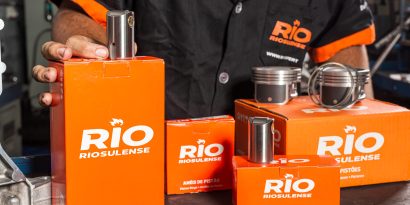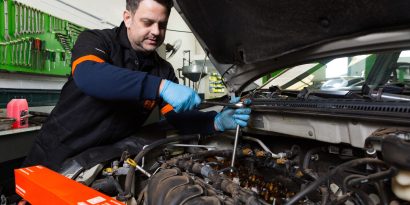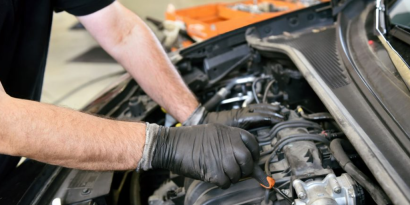Making sure the distribution kit is applied correctly is crucial for the engine to operate well — this is why Experts cannot drop the ball when working with those components. After all, the distribution kit, which includes a toothed belt, idler, and pulleys, plays a crucial role in the engine synchronization and mechanical energy distribution of the energy it generates.
With that in mind, in today’s article, we gathered a series of valuable assembling tips to facilitate the routine of professional mechanics and applicators! In addition, we listed some of the most common symptoms and defects that indicate when there is something wrong with the kit, contributing to a faster diagnosis and, consequently, more satisfied clients. Let’s go on!
Identifying common issues in the distribution kit
As in most automotive components, early detection of potential failures in the distribution kit is a good way to avoid major damage to the engine and to ensure the safety of drivers. To make that diagnosis, the applicator must pay attention to the signs! Here are some signs:
Strange sounds when starting the car: Uncommon sounds from the engine, such as creaks and cracks when starting the car, may indicate an excessive wearing of the toothed belt or a tension problem with the kit.
Ignition issue: If the engine has issues when starting, especially during cold days, it may be a sign that the toothed belt is worn and that it is no longer operating properly.
Power loss: Does the vehicle start losing power or has a slower acceleration while running? Then the issue may be in the engine synchronization, a function that is also under the responsibility of the distribution kit.
Sudden increase in fuel consumption: A worn distribution kit may lead to poor power distribution in the engine, resulting in increased fuel consumption.
Fluid leak: If, even with the engine joints duly installed, you notice coolant or oil leaks next to the distribution kit area, there is probable something wrong with the belt tension.
Toothed belt wear: This item is the main component of the distribution kit and, therefore, must be inspected regularly. Cracks, visible wear, or splits are signs that the belt must be replaced.
Engine overheating: A worn distribution kit may also lead to engine overheating due to loss of synchronization and failure in the appropriate circulation of the coolant.
Remember: Performing inspections regularly, using high-quality parts, and appropriately replacing components are the best actions for mechanics who wish to keep vehicles operating safely and efficiently, guaranteeing the clients’ satisfaction and trust!
Speaking about the replacement of components, here are 4 valuable tips for the application
As we have explained, paying attention to the warning signs mentioned above may help Experts identify issues with the distribution kit before they get worse — this is when a careful and accurate installation process is required. Don’t worry, we prepared some valuable tips to help and guide you whenever you have questions at the time of the application. Take note:
1 – Check the manufacturer’s manual
Before you start assembling the distribution kit, it is crucial to check the vehicle manufacturer’s manual. Every model may have different specifications in terms of time interval to replace the toothed belt and other components. In addition, the manual will provide detailed information on the right assembling and tension adjustment procedure, guaranteeing an appropriate and safe application.
2 – Pay attention to the assembling details
When assembling the kit, appropriately align the engine synchronization markings with the pulleys markings, making sure the toothed belt is duly tensioned. This is very easy if you use the appropriate tools for each activity! Be extra careful not to force or misalign the parts because it can cause more serious damage in the future.
3 – Always replace all components of the transmission kit
When replacing a kit, it is recommended that experts replace all components at once, including the toothed belt, idler, and pulleys. This is important because components get old and worn over time in a similar way. For example, replacing only the belt without replacing the idler may lead to early issues, since the new component will be affected by the wearing of the old ones. Completely replacing the kit results in reliability and avoids rework.
4 – Use high-quality components
To conclude, here is the golden tip: do not give up the superior quality and guarantee of origin in terms of distribution kit components. Choose parts from reliable and acknowledged brands on the market and do not forget that having a good supplier is the fastest and safest way for an efficient repair and to get satisfied and loyal clients!
We hope this article helps simplify the routine of applicators who are still in doubt about how to handle the transmission kit. If you enjoyed this material, stay tuned to the RIO blog so you don’t miss the next posts!





